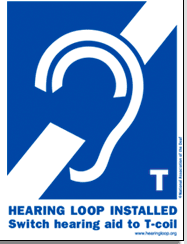
This newly developed logo for First Presbyterian Church of Monticello, Indiana was created using our liturgical colors.
As iterated in the PCUSA 2016-2017 liturgical calendar: "The liturgical colors of the Christian year are white, purple, red, and green. White is used for special days or seasons in the redemptive work of Jesus Christ, such as Christmas and Easter. Purple marks the seasons of penitence and preparation, Advent and Lent. (Blue may also be used for Advent.) Red is the color for Pentecost and is often used for ordination services. Red or Purple is appropriate for Passion/Palm Sunday. During Holy Week the color purple until the church is stripped at the end of the Maundy Thursday service. The crunch remains bare (gray) until the Easter Vigil / Easter, however some congregations use black or deep scarlet. Green is used for all other time periods (called Ordinary Time) not marked by a specific festival or season. Congregations can use the color with some flexibility. The meanings of liturgical colors and their uses offered here are not exhaustive.
Liturgical colors can orient us to the season of the church year and help to engage the sense of sight in worship. White and gold symbolize days and seasons of joy and mark pivotal events in the life of Christ. Red symbolizes the work of the Holy Spirit and the sacrifices of martyrs. Purple (and sometimes blue, in Advent) designates a season of penitence and preparation, such as Lent.”
Our design uses four liturgical colored geometric shapes with the space between the four shapes, forming the cross. Each geometric shape has two shades to add dimension and depth. Blue and Green were made the larger sized shapes of the design because they form most of our church year.


The Seal of the Presbyterian Church (U.S.A.)
The seal of the Presbyterian Church (U.S.A.) is a registered trademark. The seal is comprised of the symbol, the basic components of which are cross, scripture, a descending dove at the upper part of the cross, and flames on either side of the lower part of the cross, and the name of the denomination, Presbyterian Church (U.S.A.), encircles the symbol. It was designed by Malcolm Grear and Associates.
Each congregation and governing body may use the seal without receiving prior permission. Any other use requires prior approval by the Office of the General Assembly. Contact Bobbie Montgomery for more information.
The Seal: A Closer Look
The seal of the Presbyterian Church (U.S.A.) is a symbolic statement of the church's heritage, identity, and mission in contemporary form. Its power depends on both its simplicity and complexity, as well as its traditional and enduring qualities.
The basic symbols in the seal are the cross, Scripture, the dove, and flames. The dominant structural and theological element in the design is the cross — the universal and most ecumenical symbol of the Christian church. The cross represents the incarnate love of God in Jesus Christ and his passion and resurrection. Because of its association with Presbyterian history, the Celtic cross was chosen as a model for this contemporary rendering of the ancient symbol.
In experimenting with the basic lines and shapes of the cross, the contour of a book began to emerge in the horizontal section, and the two center lines of the cross became the representation of an open book. This integration of the horizontal dimensions of the cross with the book motif highlights the emphasis which the Reformed tradition has placed on the role of Scripture as a means of knowing God's word
The slightly-flared shape of the Celtic cross also makes possible the transforming of the uppermost section into the shape of a descending dove. As a symbol of the Holy Spirit, the dove is intimately tied to the representation of the Bible, affirming the role of the Spirit in both inspiring and interpreting Scripture in the life of the church. The dove also symbolizes Christ's baptism by John and the peace and wholeness which his death and resurrection bring to a broken world.
Beneath the image of the book is the suggestion of a lectern or pulpit, which captures the important role of preaching in the history of Presbyterian worship.
Integrated into the lower part of the design are flames which form an implied triangle, a traditional symbol of the Trinity. The flames themselves convey a double meaning: a symbol of revelation in the Old Testament when God spoke to Moses from the burning bush and a suggestion of the beginning of the Christian church when Christ manifested himself to his apostles at Pentecost and charged them to be messengers of the good news of God's love.
The triangle also suggests the nature of Presbyterian government, with its concern for balance and order, dividing authority between ministers of the Word and laypersons and between different governing bodies. This understanding of the church was based in part on an important idea in Reformed theology, the covenant, which God establishes with people to affirm God's enduring love and to call us to faith and obedience to Jesus Christ.
Looking more closely at some of the visual components of the design, viewers may discover elements that seem to fuse with some of the more obvious theological symbols. In the shape of the descending dove, for example, one might also discern in the body of the bird, the form of a fish, an early-Christian sign for Christ, recalling his ministry to those who hunger. For some, the overall design evokes the calligraphy of Hebrew and Greek manuscripts. Others have seen a baptismal font or a communion chalice (cup).
In 1 Corinthians, Paul described the church as a body with many members, illustrating the pluralism of the church and the many gifts which God gives to its members. So also the seal's individual parts, when taken together, form an encompassing visual and symbolic unity, while not exhausting the richness of possible interpretations.
For more information about the seal design, you may want to order the book Sealed in Christ by John Mulder.








